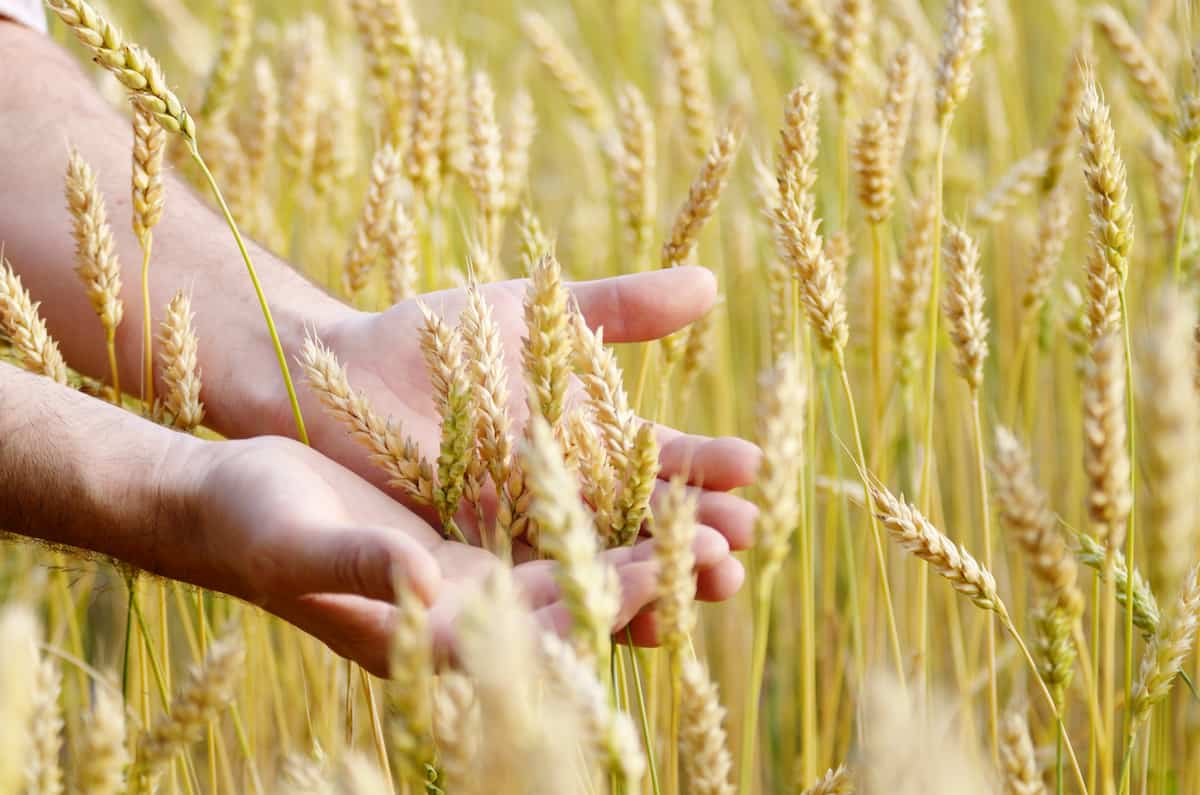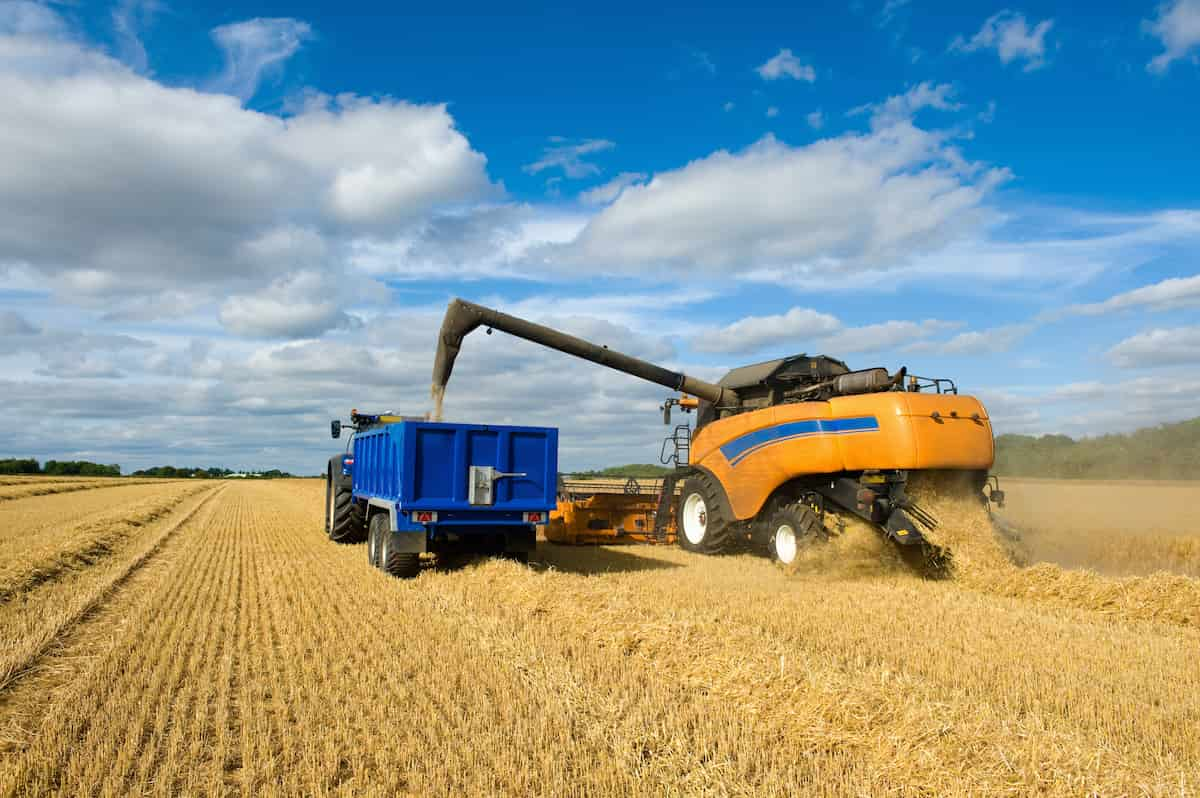With the right knowledge and resources, you can start your own wheat farm and become a successful Wheat farmer. Below we learn how to grow wheat step by step, the commercial wheat farming process, and a detailed guide to starting your own wheat farm.

How to Start Wheat Farming in the USA
Conduct a Feasibility Study
Conducting a feasibility study is the first step in starting any agricultural venture. A feasibility study helps you determine the potential profitability of your wheat farming business and identify potential risks and challenges you may face. Some of the factors you need to consider in your feasibility study include:
- Soil type: Wheat grows best in well-drained soils rich in organic matter. You need to assess the soil type in your intended location and determine if it suits wheat farming.
- Climate: Wheat requires a temperate climate with cool winters and mild summers. You need to assess the climate in your intended location and determine if it suits wheat farming.
- Market demand: Wheat is in high demand in the USA and is used to produce various food products such as bread, pasta, and pastries. You need to assess the market demand for wheat in your area and determine if there is a ready market for your wheat.
- Potential profitability: You need to assess the potential profitability of your wheat farming business by estimating the costs involved in starting and running the farm, as well as the expected revenue from selling your wheat.
Choose a Suitable Location
Once you have conducted a feasibility study and determined that wheat farming is a viable business for you, the next step is to choose a suitable location for your farm. Some of the factors to consider when choosing a location for your wheat farm include:
- Soil type: As mentioned earlier, wheat grows best in well-drained soils rich in organic matter. You need to choose a location with soil suitable for wheat farming.
- Climate: Wheat requires a temperate climate with cool winters and mild summers. You need to choose a location with a climate suitable for wheat farming.
- Water supply: Wheat requires adequate water, especially during the growing season. You need to choose a location with a reliable source of water.
- Proximity to market: Choosing a location close to your target market is important, as this will help reduce transportation costs and improve your profit margins.
Prepare the Land
Once you have chosen a suitable location for your wheat farm, the next step is to prepare the land for planting. Some of the activities involved in land preparation include:
- Clearing the land: You must clear the land of any debris, rocks, or weeds that may hinder your planting activities.
- Tilling the soil: You need to till the soil to create a suitable seedbed for planting. Tilling helps to break up the soil, improve soil aeration and drainage, and incorporate organic matter into the soil.
- Fertilizing the soil: You need to apply fertilizers to provide essential nutrients for plant growth. The type and amount of fertilizer to use will depend on your soil test results and the specific nutrient requirements of wheat.
In case you missed it: Wheat Production Guide: A Step-By-Step Cultivation Practices

Select the Wheat Variety
There are several varieties of wheat grown in the USA, each with unique characteristics and suitability for different locations and growing conditions. Some of the popular wheat varieties grown in the USA include:
- Hard Red Winter Wheat: This variety is the most widely grown wheat in the USA and is used to produce bread flour.
- Soft Red Winter Wheat: This variety primarily produces cakes, cookies, and pastries.
- Hard White Wheat: This variety is a relatively new type of wheat that is gaining popularity for its unique flavor and nutritional properties.
Planting
Planting is a critical stage in wheat farming, as it determines the success of your crop. Some of the factors to consider when planting your wheat include:
- Timing: Wheat is typically planted in the fall or spring, depending on the variety and location. You must plant your wheat at the right time to ensure optimal growth and development.
- Seed rate: You must determine the appropriate seed rate for your wheat variety and soil type. The recommended seed rate for wheat is between 90-120 pounds per acre.
- Planting method: You can plant your wheat using a drill seeder or broadcast method. The drill seeder method is more efficient, resulting in better seed placement and uniformity.
Crop Maintenance
Once your wheat has been planted, you need to maintain it by providing adequate water, nutrients, and pest control. Some of the crop maintenance activities include:
- Irrigation: Wheat requires regular watering, especially during the growing season. You need to provide adequate water to ensure optimal growth and development.
- Fertilization: Wheat requires adequate nutrients to support growth and development. You need to apply fertilizers at the right time and amount to provide the necessary nutrients.
- Pest control: Wheat is susceptible to various pests and diseases that can reduce yields and quality. You need to monitor your crop for pests and diseases and take appropriate control measures when necessary.
Harvesting
Harvesting is the final stage in wheat farming, and it involves the removal of mature grain from the crop. Some of the factors to consider when harvesting your wheat include:
- Timing: You need to harvest your wheat when it is fully mature, and the grains have reached the desired moisture content. The ideal moisture content for wheat is between 10-13%.
- Equipment: You can use a combine harvester to harvest your wheat. The combine harvester removes the grain from the straw and separates the chaff from the wheat.
- Storage: Store your harvested wheat in a dry, cool place to prevent spoilage and preserve quality.
Marketing
Once you have harvested your wheat, you must market it to buyers who will process it into various food products. Some of the potential buyers of wheat include:
- Flour mills: Flour mills process wheat into flour to produce bread, cakes, and pastries.
- Bakeries: Bakeries use wheat flour to make baked goods such as bread, cookies, and pastries.
- Pasta makers: Pasta makers use wheat flour to make various types of pasta.
You need to identify potential buyers in your area and negotiate favorable prices for your wheat.
In case you missed it: How to Start Cotton Farming in the USA: A Step-By-Step Production Guide

Conclusion
Starting a wheat farm in the USA is a challenging but rewarding venture. With hard work and dedication, you can achieve success in wheat farming.
- Feed Your Flock for Less: Top 10 Tips to Save on Chicken Feed
- Ultimate Guide to Ossabaw Island Hog: Breeding, Raising, Diet, and Care
- Hatching Answers: The Top 10 Reasons Your Chickens Aren’t Laying Eggs
- Eggs and Economics: Breaking Down the Cost of Raising Backyard Chickens
- Defend Your Greens: Proven Methods to Keep Iguanas Out of Your Garden
- Ultimate Guide to Cinnamon Queen Chicken: A Comprehensive Guide for Beginners
- Ultimate Guide to California Tan Chicken: Breeding, Raising, Diet, Egg-Production and Care
- Ultimate Guide to Marsh Daisy Chicken: Breeding, Raising, Diet, and Care
- 10 Types of Chicken Farming Businesses You Can Start for Profits